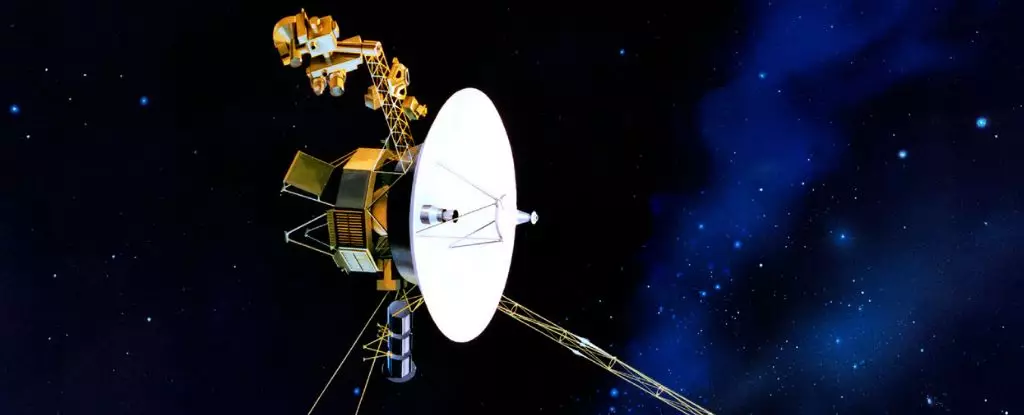The iconic Voyager spacecraft, launched in 1977, have become symbols of human ingenuity and curiosity, revealing the mysteries of our solar system and beyond. However, as these remarkable machines venture ever further into the cosmos, they face a critical energy challenge that has led to the decommissioning of essential scientific instruments. This article delves deep into the implications of this decision, the legacy of Voyager, and what lies ahead for humanity’s most distant explorers.
The Plight of Aging Technology in Space Exploration
Launched at a time when space exploration was in its infancy, the Voyager missions were a monumental leap forward in our quest to understand the universe. Powered initially by radioisotope thermoelectric generators (RTGs), these crafts have traveled billions of kilometers, but the decay of their plutonium fuel is now taking its toll. NASA engineers have been navigating the delicate balance of power management carefully, knowing that each passing year brings diminishing returns on energy.
NASA’s recent decision to deactivate the plasma science instrument aboard Voyager 2 signifies the inevitable decline of technological capabilities. While the instrument provided crucial data on ionized particles, its decreasing functionality made it expendable in favor of other more active experiments. This choice reflects a broader strategy to extend the life of the remaining instruments as long as possible, but it also serves as a reminder of technology’s limitations, even in the vast expanse of space.
The Voyagers stand as unparalleled pioneers, having traversed uncharted territories and brought back invaluable insights into the far reaches of our solar system. Both spacecraft performed flybys of Jupiter, Saturn, Uranus, and Neptune, forever altering our understanding of these planets. Their data fosters an appreciation for the complexity of our celestial neighbors, revealing phenomena such as Saturn’s stunning rings and the peculiarities of Uranus’s tilt.
Moreover, the Voyagers are currently in their Interstellar Mission phase, providing an exclusive window into the heliosphere and the interstellar medium. The information gathered has proven essential for scientists to understand the cosmic environment lying beyond our solar system. Yet, as they drift further away, much of this research potential grows limited, leading to the difficult choice to shut off instruments capable of contributing to this groundbreaking work.
The Communication Challenge
Another poignant aspect of the Voyager missions is the communication delay experienced by mission control. With each spacecraft now over 20 billion kilometers from Earth, signals face nearly a day-long journey before reaching their destinations. This distance underscores the isolation of our fleet in the vastness of space and introduces a sense of urgency for scientists seeking to extract every bit of knowledge possible from the aging probes.
The technological hurdles inherent in such immense distances are significant. As Voyager 2 slows down due to energy loss—now traveling at 15 km/s—immediate decisions must be made to conserve resources while still maintaining active communication lines. Each communication is a link to a past era of space exploration and human innovation, but with such gems now becoming rarer, the focus shifts toward maximizing what little data they can collect before it’s too late.
Despite the challenges ahead, the legacy of the Voyager spacecraft remains strong. Since their inception, these craft have become more than mere machines; they are ambassadors of Earth, carrying golden records containing the sounds, sights, and representations of humanity to the stars. This effort symbolizes our collective aspiration to communicate with other forms of life and reflect on our place in the universe.
As the wheels of time continue to turn, and power dwindles, scientists and engineers are left with an incredible opportunity to celebrate the achievements of these missions. Even as they shut down non-essential instruments, they remind us of the importance of scientific exploration and the persistent human quest for knowledge. The Voyager project has, and will continue, to inspire future generations to embark on daring quests into the unknown.
Looking to the Future
The gradual phasing out of Voyager instruments marks the closing chapter of one of our most fruitful periods of exploration. Yet it also opens the door for future missions, driven by lessons learned from their experience. NASA’s ongoing commitment to deep-space exploration remains unwavering, signaling that while we may bid farewell to the Voyagers, new ventures will take their place, building upon the remarkable foundation they established.
The Voyager spacecraft serve as a reminder of our journey into the cosmos, showcasing the triumphs and trials of human innovation. As we contemplate their fading power and dwindling capacity for scientific inquiry, we are challenged to embrace the spirit of exploration that inspires us to reach for the stars, ensuring that the legacy of the Voyagers lives on in every new mission that follows. The story is far from over.


Leave a Reply